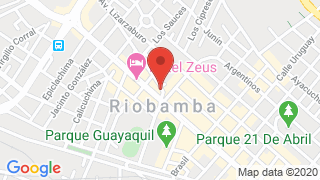South Central Sierra

Chimborazo and Bolivar are two provinces that make up part of the south central highlands of Ecuador. These fertile lands with broad valleys and slopes were home to some of the largest and most productive farms in the country in years gone.
The large estates do no exist anymore, but unlike other regions in the country where such properties and production were lost, the lands continue to be very productive here, however with fields and orchards on a smaller degree that still feed a good part of the country.
Mountains and hills are a multicolored tapestry that produces potatoes, carrots, radishes, onions, garlic, highland corns, wheat, barley, oats, quinoa and amaranth.
The large landowner families migrated to Quito and Guayaquil, leaving behind Riobamba, Guaranda and other towns, which in turn allowed the indigenous population to concentrate. The culinary customs here are quite pleasant in nature, offering an array of simple dishes that are varied and tasty as well.
This is the region where our indigenous cuisine has been best preserved, with many traditional ingredients, such as: mellocos, ocas, mashua and other tubers, as well as many varieties of potato and corn, quinoa and amaranth, etc.
Additionally, these products maintain the same use as they did when they were produced and consumed in ancient times. The expanding global demand for ancestral seeds and crops (not genetically manipulated) is bringing on a new life for products like these, and they are now being grown more and more, with many varieties lost over time now being now reintroduced.
Here, simple yet hardy dishes reign, which are always very substantial, especially soups. This is the home to "Coladas" (porridges), usually made with a pork or chicken broth that is thickened with a cornmeal or flour from habas (broad beans), peas, corn or barley, before adding cabbage, potatoes or fresh corn and/or beans, then usually served with "tostado" (pan roasted corn).
Other hardy soups include arroz de cebada (barley), melloco or zambo (White pumpkin) locro (chowder), and quinoa, etc. A lot of fresh beans and grains are consumed, whether dried or peeled, such as hominy, either boiled, or in stews or poridges.
Meats from free roaming and farmed animals are preferred to industrialized ones, thus you can find many live animal markets that sell pigs, chickens, ducks, pigeons, guinea pigs, sheep, goats and llamas.
Here, meats are prepared unlike in other parts of the highlands: fried, boiled, roasted or grilled. Nothing goes to waste, every part of the animal is used, tripe, ears, feet, offal, heads, and even the blood when preparing dishes such as mondongo, chanfaina, tripa mishki, librillo, guatita, morcillas, and caldo de patas, etc.
One of the best-known dishes in Ecuadorian cuisine is "Yaguarlocro," a seasoned potato soup made with lamb or mutton offal (heart, lungs, tripe, liver, kidneys) and served with stir-fried blood. This is truly a delicious treat for those who like exotic dishes and venture to taste them.
This soup gets its name from the Quechua language, with "yaguar" meaning blood, and "lukru" meaning soup. With regards to desserts there are no more than other parts of the highlands, however the people do prepare many sweetened drinks, such as chicha from corn, oats or other grains, in addition to coladas made from bananas or apples, which compliment their savory dishes.
Over the years missionaries, priests, preachers and other religious figures have come to this area of Ecuador, and continue to do so, bringing with them new ideas that blend with the local talent to develop projects for indigenous communities to develop, resulting in new sources of income for this impoverished region.
Many successful small businesses have been created by applying this system, including in the food industry. El Salinerito, a community dairy industry in Salinas, Bolivar that makes excellent cheeses sold throughout the country is a good example of these joint ventures.
There are several similar businesses that make honey, nougats, chocolates, agave syrup, dried mushrooms, amaranth, red and black quinoa, and many other products. Visiting Chimborazo and Bolivar is definitely worth the time. Come and taste the local cuisine and enjoy the scenery. These are only a few examples of the true beauty this country has to offer, which has been truly privileged and blessed by the sun.

Publicado en:
Publicado por:



